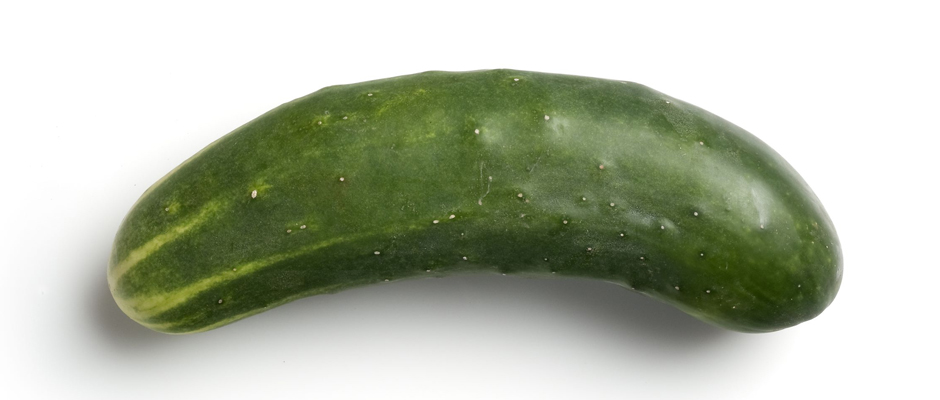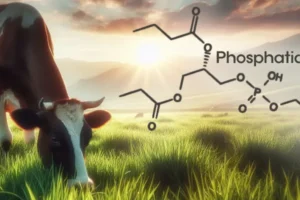Peyronie’s Disease Treatment Ideas
I am often asked to look into various health conditions that mainstream medicine seems to have limited information on or has yet to connect certain dots. It is sad to say that in this modern era, there are still quite a few questions regarding personal health, which is very true regarding men’s health because men seem reluctant to get things checked out. Understand that the information I share shouldn’t be considered the “end-all” of the topic. This is because it comprises information that has already been compiled in one form or another. Today, I will discuss Peyronies’ disease and some possible solutions.
What is Peyronies’ Disease
Peyronie’s disease is the development of fibrous scar tissue (plaques) inside the penis that causes significantly curved and sometimes painful erections. Not to be confused with Mondor’s disease (penile), Peyronie’s can often prevent men from having sex or might even make it difficult to get or maintain an erection.
The occurrence of Peyronie’s disease seems to depend on what source you are reviewing. I’ve seen it said that it’s extremely rare, rare but on the rise, and even that it’s quite common, affecting as much as 1 in 11 men despite the lack of public awareness. Regardless, this is clearly a problem because I’ve seen numerous forums filled with men seeking solutions to this condition.
Unfortunately (and likely why so many men continue to suffer), medical experts say that they do not know the exact cause of Peyronie’s disease. Many believe that Peyronie’s disease may be the result of injury or even the result of an autoimmune disease. However, they do not believe it is contagious or caused by any known transmittable disease. Furthermore, the plaques are usually noncancerous and are not tumors.
It should be known that not all men that suffer injury to the penis will get Peyronie’s disease and that not all men with Peyronie’s disease will have received a penile injury. This is why many researchers think there must be a genetic or environmental reason for Peyronie’s disease, but research is ongoing. A proper evaluation may help determine a cause, but it is unlikely.
How Long Does It Last
Pain during erections usually improves within one to two years, but the scar tissue and curvature often remain. According to the data, for a small percentage of men, the curvature and pain associated with Peyronie’s disease will sometimes go away on their own. However, in many cases, it will either stabilize at some point or worsen over time.
In the beginning months, your doctor will likely recommend a wait-and-see approach. This period can last anywhere from 6 to 12 months. During this time, they will evaluate pain levels, curvature, and erectile function. If they feel that intervention is needed, they will make their recommendations at that time.
What Are Some Medical Treatment Options
Since medical experts are unfamiliar with the exact cause of Peyronie’s disease, treatment options will be quite limited. The reason is that you often cannot find a solution to a problem you cannot see. To be clear, there is currently no recognized “cure” for the disease.
If symptoms worsen or become severe, your doctor may recommend medication, injections, or surgery. Drugs are hit-and-miss regarding effectiveness, but mainstream medications might include:
- Collagenase: Currently, it’s the only FDA-approved medication for Peyronie’s disease, and it has been shown to improve curvature and pain associated with Peyronie’s disease in some men.
- Interferon: This is a type of protein that appears to disrupt the production of fibrous tissue and helps break it down.
- Tamoxifen: Tamoxifen is an anti-estrogen drug. According to studies, some men who have been treated with tamoxifen for Peyronie’s disease have reported an improvement in pain, size of the plaque, and the bend of the penis.
Note: Other mainstream treatments are available, so ask your doctor which one might be right for you.
Natural & Alternative Treatment Options
Some potentially good news I have reviewed is that you’re not entirely helpless if you are dealing with this terrible disease. You may find relief in a matter of weeks to a few months by using natural alternatives. However, for alternative methods to be effective, the sooner you catch it, the better off you’ll be.
Caution: Always get a proper diagnosis before starting any treatment and discuss alternative therapies with your doctor before trying them.
- Acetyl-L-Carnitine (ALCAR): ALCAR is an acetylated form of L-carnitine. The body naturally produces it, but it is also available in supplement form that you can buy at a health-food store or online. It has been used in health and wellness circles for years as a mitochondrial-boosting supplement that improves mood, learning, and memory. It is also known to help burn fat and speed recovery in the gym. But it’s not just an “alternative” treatment. It has even been found in studies to help with things like depression and is used clinically for various purposes. For our purposes here, understand that studies have shown that ALCAR is “significantly” more effective than tamoxifen in reducing pain and inhibiting the progression of both acute and early chronic Peyronie’s disease. Dosage ranges vary, but 1 gram twice daily for at least three months has been reported to be successful.
- N-acetyl-L-cysteine (NAC): NAC is an amino acid derivative well-known in the medical community. It has numerous medical uses, but it is listed in this article because it may be a useful therapy for autoimmune/inflammatory diseases and because it helps to boost glutathione production. Dosage seems to vary, but 1,200-1,800 mg/day for three to six months is often used.
- Proteolytic enzymes: Proteolytic enzymes create the dissolution of fibrin in the body. Fibrin proteins make up scar tissue. Proteolytic enzymes are thought to dissolve (digest) the proteins and help prevent fibrin deposition (which may help get rid of those painful plaques). Highly fibrinolytic enzymes such as Serrapeptase, Lumbrokinase, and Nattokinase have been said to help. Buy from a reputable source and follow the instructions on the label. Some report improvement in as little as three months of continued use.
- Castor Oil: Applying castor oil on the skin over the plaques may help soften the plaques and reduce associated pain. While results vary, some have seen results in three months but note a substantial difference in as little as 2-3 weeks.
- Shockwave / Sonic Treatment: Some men have reported success with this technique once the disease has stabilized (see ALCAR above). Using extracorporeal shockwave therapy (ESWT) machines or even the backside of a sonic toothbrush (opposite the bristles, of course) and using an oil (like castor oil) as a lubricant, set the machine to its highest setting and press firmly against the plaques. Massage the plaques in a circular motion for between five and fifteen minutes. Repeat this treatment every three days until you are satisfied with the results or until you fail to see the desired results after three months. This method is thought to help break up the hardened plaques, which will be reabsorbed into the body. This is not some fringe idea. I have seen several studies now that suggest that shockwave therapy and high doses of vitamin E are both viable options for a non-invasive, effective, and safe treatment for the disease. My review has even uncovered videos of urologists seeing similar success.
- Vitamin E: I’m going to list this even though there appears to be a bit of debate. To be quite clear, I have reviewed a lot of material, and my research has found materials that show that Vitamin E doesn’t work. Some materials show that it does work – and some in the middle say that its antioxidant properties may help with pain during the acute phase of the disease but won’t affect the curvature (links provided are just for example). Regardless, I am paying attention to the idea that quite a few doctors are suggesting that patients with Peyronie’s also often suffer from a deficiency of vitamin E and are seeing success with some of their patients when that deficiency is addressed. At the very least, know that quite a few clinics suggest taking it because antioxidants, such as vitamin E, taken for at least three months often accelerate scar maturation and healing. Either way, it’s worth a shot and cheap to try.
- Erection Therapy: This is likely to be considered unconventional in some circles, and it will not work for all men or in all cases, but something interesting to note is that a good amount of materials on the subject suggests that increasing or maintaining blood flow is critical in healing this disease. That may be why you will see suggestions for drugs like pentoxyphyline or other E.D. medication. However, while erections may hurt a bit during the acute phase, understand that an erect penis contains up to eight times the amount of blood as a flaccid penis. This is important because you’re essentially dealing with a wound, and a wound not getting enough blood could take at least twice as long to heal. Erection therapy might help speed things up a bit. However, erection therapy is not about climax, penetration, or aggressive motions. It’s simply about getting blood to the penis and trying to keep it there for more than five minutes. This is good for most men anyway because the firmer you can keep your erections, the less likely you’ll be to get Peyronie’s disease in the first place. Be careful and listen to your body.
- Proper Diet & Lifestyle: This should go without saying, but getting adequate blood flow is pointless if the blood does not carry what you need to heal. A healthy diet and lifestyle promote proper blood flow, deliver the nutrients necessary to heal, and even speed up the wound-healing process.
- Combo-Therapy: Using the suggested alternative supplements and techniques at the same time may provide substantial relief in rapid time for some men. However, all alternative treatment times will likely require no less than three months before any resolutions or improvements will be seen.
Product Suggestions
Here are some supplement suggestions that can be delivered right to your door via Amazon.com
- Acetyl-L-Carnitine (ALCAR)
- N-acetyl-L-cysteine (NAC)
- Lumbrokinase
- Castor Oil
- Extracorporeal shockwave therapy (ESWT) machine
- Vitamin E
Important to Note: Unfortunately, no treatment or suggestion is guaranteed.
Read more about NAC in my article “The N-acetyl Cysteine (NAC) Powerhouse.”
Dr. Robertson is a health researcher and educator, not a physician. The information provided here is not medical advice, a professional diagnosis, opinion, treatment, or service to you or any other individual. The information provided is for educational and anecdotal purposes only and is not a substitute for medical or professional care. You should not use the information in place of a visit, call consultation, or the advice of your physician or other healthcare providers. Dr. Robertson is not liable or responsible for any advice, course of treatment, diagnosis, or additional information, services, or product you obtain or utilize. IF YOU BELIEVE YOU HAVE A MEDICAL EMERGENCY, YOU SHOULD IMMEDIATELY CALL 911 OR YOUR PHYSICIAN.




